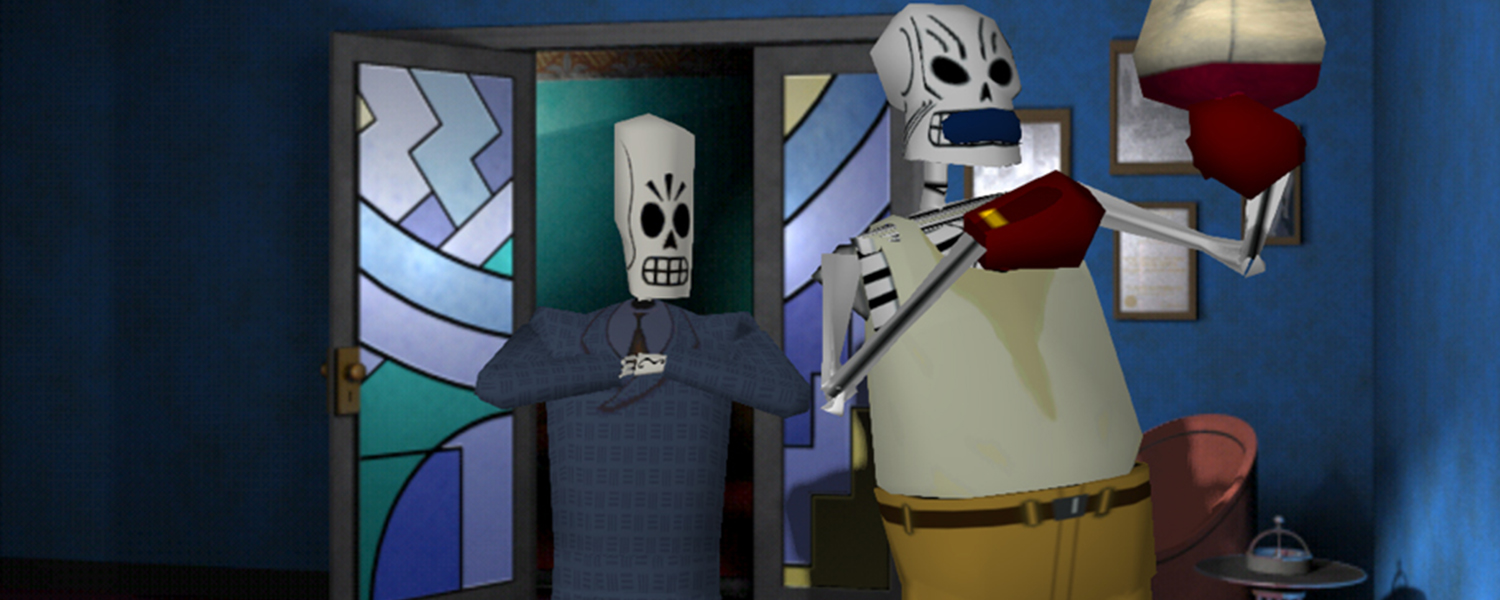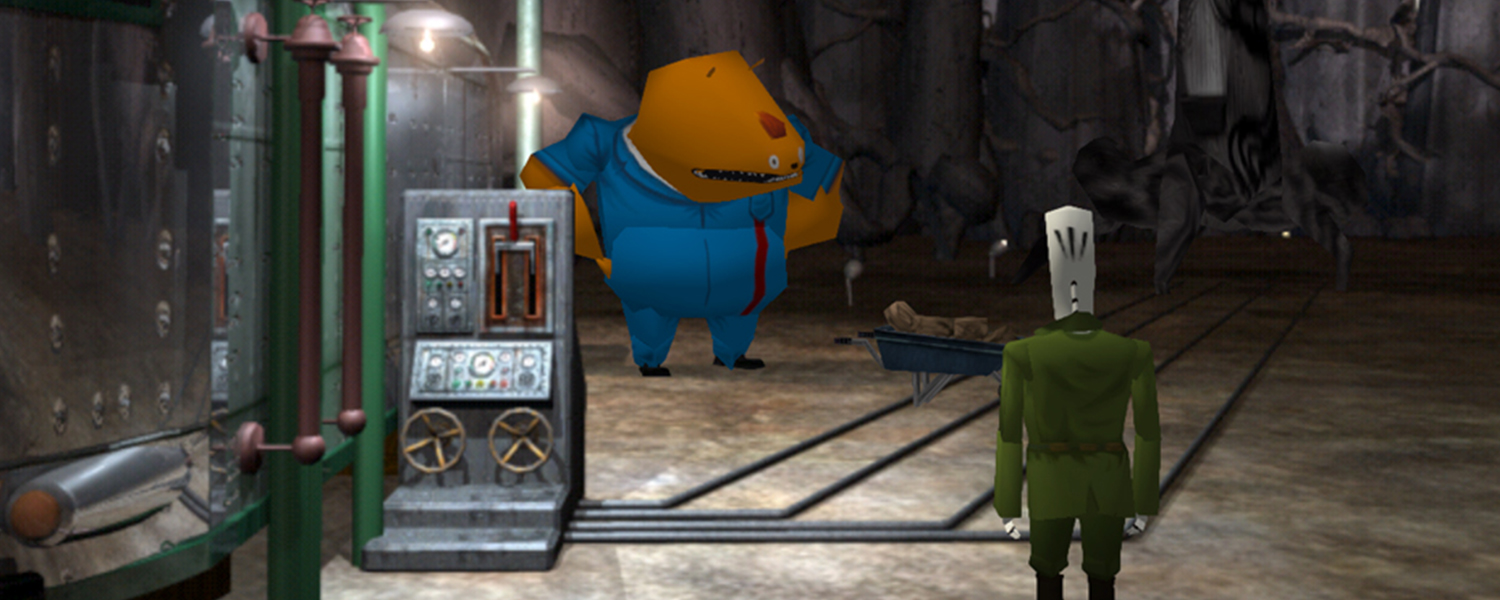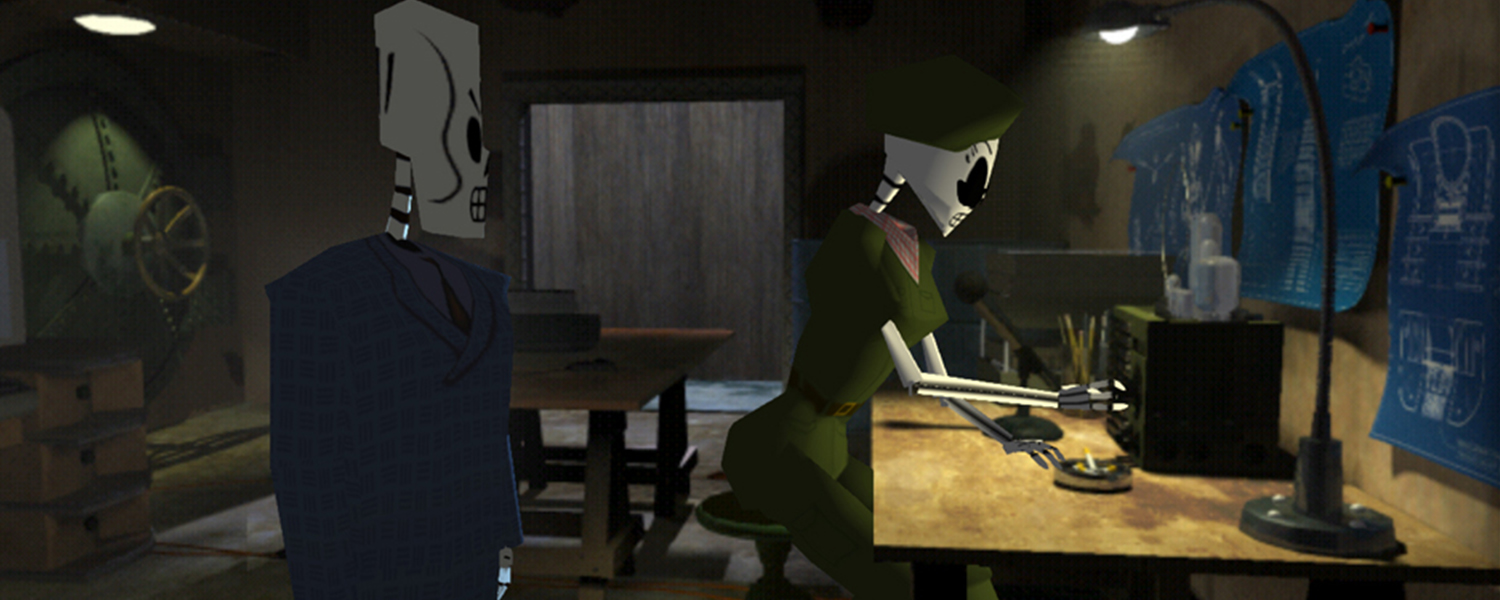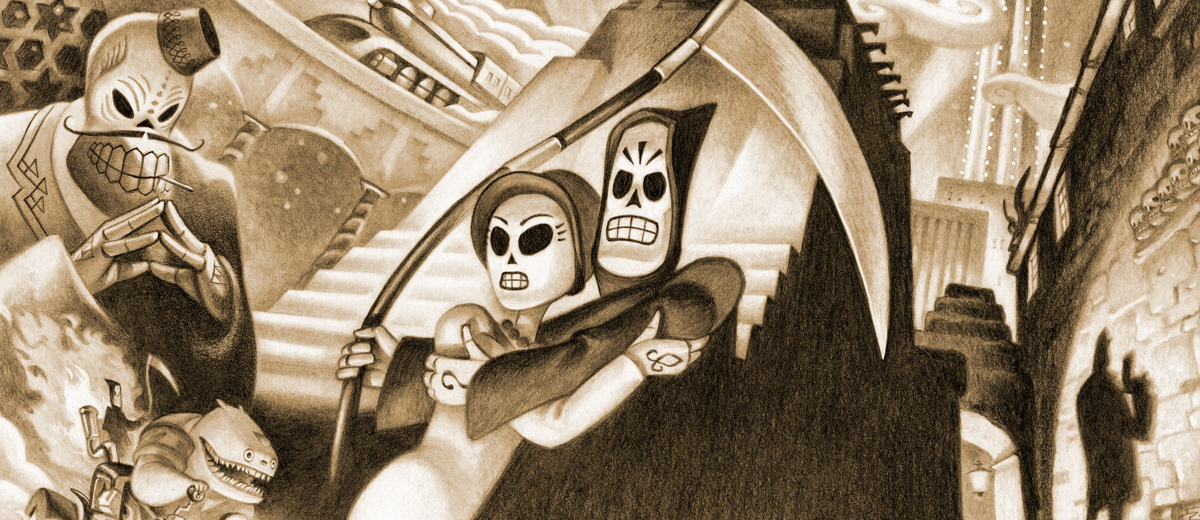 Is Grim Fandango a relic of the past? Or does this post-mortem crime noir hold up for players of this generation? Double Fine takes us on the renewed adventures of Manny Calavera.
Is Grim Fandango a relic of the past? Or does this post-mortem crime noir hold up for players of this generation? Double Fine takes us on the renewed adventures of Manny Calavera.
 Grim Fandango takes us on the journey of Manny Calavera, a deceased soul working as a Reaper in order to work off the sins he supposably committed during his time among the living. When you live a good life, you get the deluxe package to paradise, but if you’re not, you get to work off the scraps and earn your ascension the hard way. When Manny continuously gets the short end of the stick with his clients, he grows suspicious that there may be some shady antics going on at his precinct, and that the souls he helped cross over may have deserved their happily ever after after all.
Grim Fandango takes us on the journey of Manny Calavera, a deceased soul working as a Reaper in order to work off the sins he supposably committed during his time among the living. When you live a good life, you get the deluxe package to paradise, but if you’re not, you get to work off the scraps and earn your ascension the hard way. When Manny continuously gets the short end of the stick with his clients, he grows suspicious that there may be some shady antics going on at his precinct, and that the souls he helped cross over may have deserved their happily ever after after all.
 The fun thing about Grim Fandango is its mix of concepts and ideas, giving a fun look at the afterlife through a noir crime drama featuring brilliantly written characters and a narrative that seems both creative and familiar. Click-and-point adventures are often a hit-or-miss for some players, but Grim keeps the formula interesting thanks to its great pacing and writing. The game is composed as a single linear story, but is still structured with chapters which make it easier to trop in and out throughout its entirety.
The fun thing about Grim Fandango is its mix of concepts and ideas, giving a fun look at the afterlife through a noir crime drama featuring brilliantly written characters and a narrative that seems both creative and familiar. Click-and-point adventures are often a hit-or-miss for some players, but Grim keeps the formula interesting thanks to its great pacing and writing. The game is composed as a single linear story, but is still structured with chapters which make it easier to trop in and out throughout its entirety.
 The charm of Grim Fandango’s graphics are mostly compromised by the charming character designs, but from a visual perspective the game has surely taken a bit of a hit, which is disappointing considering the fact that this a remaster. Double Fine has taken the route of preserving the original visual presentation of the game, which is presented in a pillarboxed 4:3 aspect ratio with slightly redone static environments, which may not be up to par for some. The thing is, Grim Fandango Remastered keeps the original charm of the game in tact, but it also disappoints due to the fact that there is a lot more that Double Fine could have done to present the world of Grim Fandango.
The charm of Grim Fandango’s graphics are mostly compromised by the charming character designs, but from a visual perspective the game has surely taken a bit of a hit, which is disappointing considering the fact that this a remaster. Double Fine has taken the route of preserving the original visual presentation of the game, which is presented in a pillarboxed 4:3 aspect ratio with slightly redone static environments, which may not be up to par for some. The thing is, Grim Fandango Remastered keeps the original charm of the game in tact, but it also disappoints due to the fact that there is a lot more that Double Fine could have done to present the world of Grim Fandango.
 The world of Grim Fandango is mostly presented through static backgrounds and items, which are basically flat layers, rather than actual 3D objects. The characters and certain items are presented as modelled 3D objects, and considering the style of gameplay this isn’t really a problem, though the imagery of the world certainly has taken a bit of a hit due to the age of the game. Double Fine has remastered these images, and they are definitely displayed at a higher quality than the original release, but other than the improved character/object rendering there isn’t much that can truly make this release of Grim Fandango a complete remaster. Despite this fact, I will admit that this isn’t as much a problem as I would otherwise make of it, considering a lot of the visual flair of the game comes from its classic presentation, which Double Fine more than likely spent more time retaining.
The world of Grim Fandango is mostly presented through static backgrounds and items, which are basically flat layers, rather than actual 3D objects. The characters and certain items are presented as modelled 3D objects, and considering the style of gameplay this isn’t really a problem, though the imagery of the world certainly has taken a bit of a hit due to the age of the game. Double Fine has remastered these images, and they are definitely displayed at a higher quality than the original release, but other than the improved character/object rendering there isn’t much that can truly make this release of Grim Fandango a complete remaster. Despite this fact, I will admit that this isn’t as much a problem as I would otherwise make of it, considering a lot of the visual flair of the game comes from its classic presentation, which Double Fine more than likely spent more time retaining.
 Grim Fandango can be simply summarised as a point-and-click adventure, and in the modern market it wouldn’t be too far-fetched to compare this with Telltale titles, which share a similar structure. The key difference here is that Grim Fandango doesn’t divide its structure in episodes, but in chapters which act more like the acts of a single film, which makes dividing your playthrough in smaller sessions easier. Detective work is the core of gameplay, and the game doesn’t exactly give you the most obvious hints when it comes to certain objective, and actually challenges when player in finding items and confronting characters.
Grim Fandango can be simply summarised as a point-and-click adventure, and in the modern market it wouldn’t be too far-fetched to compare this with Telltale titles, which share a similar structure. The key difference here is that Grim Fandango doesn’t divide its structure in episodes, but in chapters which act more like the acts of a single film, which makes dividing your playthrough in smaller sessions easier. Detective work is the core of gameplay, and the game doesn’t exactly give you the most obvious hints when it comes to certain objective, and actually challenges when player in finding items and confronting characters.
 A big issue with modern titles is the fact the difficulty levels often take the intelligence of the player for granted, and lays out everything perfectly for the players to find, but Grim Fandango gives you the breathing room to figure out the works for yourself. That being said, mechanics-wise the game isn’t exactly that hard to figure out; choose your dialogue options, navigate the areas and find/use the objects you encounter. The thing is, it all works perfectly, but only thanks to the narrative that keeps it all together. Without the great story and characters, the gameplay aspects of Grim Fandango would possibly have their issues holding up. You’d expect differently in a market filled with Telltale’s games, but the lack of decisions and different outcomes in this LucasArts classic make the game a little more tiresome in repeated sessions due to its form factor, but for a singular playthrough Grim Fandango is a delight to experience. You don’t have to be a fan of point and click adventures to enjoy Grim Fandango, though it may help smoothen up the journey a bit for the players themselves.
A big issue with modern titles is the fact the difficulty levels often take the intelligence of the player for granted, and lays out everything perfectly for the players to find, but Grim Fandango gives you the breathing room to figure out the works for yourself. That being said, mechanics-wise the game isn’t exactly that hard to figure out; choose your dialogue options, navigate the areas and find/use the objects you encounter. The thing is, it all works perfectly, but only thanks to the narrative that keeps it all together. Without the great story and characters, the gameplay aspects of Grim Fandango would possibly have their issues holding up. You’d expect differently in a market filled with Telltale’s games, but the lack of decisions and different outcomes in this LucasArts classic make the game a little more tiresome in repeated sessions due to its form factor, but for a singular playthrough Grim Fandango is a delight to experience. You don’t have to be a fan of point and click adventures to enjoy Grim Fandango, though it may help smoothen up the journey a bit for the players themselves.
Playthrough lengths may vary by player and purpose, but at a steady pace the game should last you about 10+ hours, with more or less depending on wether you want to go for a completionist run or not. There are some things that you may miss in your sessions, though many of these are limited to small fun things to uncover, rather than actual story-relevant information, unless you’re choosing to skip out on certain dialogue options.



